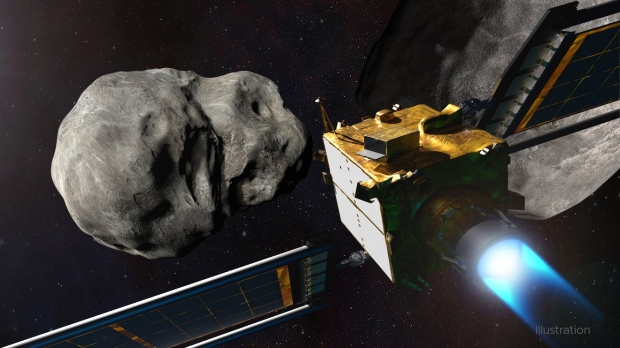NASA has successfully conducted the world's first planetary defense mission, where the space agency launched a small spacecraft and hit a distant asteroid.
NASA has announced that its Double Asteroid Redirection Test (DART) has completed its objective of impacting a distant asteroid with its DART spacecraft. The space agency has taken to its social channels to share the final moments of the spacecraft approaching the large binary asteroid Didymos and its moonlet Dimorphos, both of which currently poses no threat to Earth at all. NASA's goal was to send the DART spacecraft to collide directly with Dimorphos, with the overall goal being to change the asteroid's orbit.
NASA launched the DART spacecraft in November 2021, and since then, the small spacecraft has been traveling millions of miles away from Earth toward its target. On its way to Dimorphos the spacecraft's Didymos Reconnaissance and Asteroid Camera for Optical navigation, or DRACO, snapped several images of a distant Jupiter. DRACO was also used by researchers to take thousands of pictures of stars, and with these images, researchers were able to make sure DART's trajectory lined up cleanly with Dimorphos. An effort that seems to have paid off.
"DART targeted the asteroid moonlet Dimorphos, a small body just 530 feet (160 meters) in diameter. It orbits a larger, 2,560-foot (780-meter) asteroid called Didymos. Neither asteroid poses a threat to Earth. The mission's one-way trip confirmed NASA can successfully navigate a spacecraft to intentionally collide with an asteroid to deflect it, a technique known as kinetic impact," wrote NASA.
Dimorphos is approximately the size of a football stadium, according to NASA, and the DRACO camera was able to capture the final moments before everything went black, or in the video - red. From the above video, we can see NASA's DART team celebrating the impact in a well-deserved wholesome moment that has gone down as a historic milestone for Earth. As for the size DART spacecraft, NASA writes that it's approximately the size of a vending machine. However, due to its traveling speed of approximately 14,000 mph, it's estimated to have enough kinetic force to change the orbit of the asteroid.
"At its core, DART represents an unprecedented success for planetary defense, but it is also a mission of unity with a real benefit for all humanity. As NASA studies the cosmos and our home planet, we're also working to protect that home, and this international collaboration turned science fiction into science fact, demonstrating one way to protect Earth," said NASA Administrator Bill Nelson.
NASA has yet to release the results of the impact and has written on its NASA Solar System Twitter account that within the coming weeks, the team will learn more about what exactly happened during this successful impact and if previous estimations were accurate. NASA estimates that DART's impact should shorten Dimorphos' orbit by about 1%, or about 10 minutes. More information will be released in the coming days/weeks.
"The investigation team will now observe Dimorphos using ground-based telescopes to confirm that DART's impact altered the asteroid's orbit around Didymos. Researchers expect the impact to shorten Dimorphos' orbit by about 1%, or roughly 10 minutes; precisely measuring how much the asteroid was deflected is one of the primary purposes of the full-scale test," wrote NASA.
"Planetary Defense is a globally unifying effort that affects everyone living on Earth. Now we know we can aim a spacecraft with the precision needed to impact even a small body in space. Just a small change in its speed is all we need to make a significant difference in the path an asteroid travels," said Thomas Zurbuchen, associate administrator for the Science Mission Directorate at NASA Headquarters in Washington.
"DART's success provides a significant addition to the essential toolbox we must have to protect Earth from a devastating impact by an asteroid. This demonstrates we are no longer powerless to prevent this type of natural disaster. Coupled with enhanced capabilities to accelerate finding the remaining hazardous asteroid population by our next Planetary Defense mission, the Near-Earth Object (NEO) Surveyor, a DART successor could provide what we need to save the day," said Lindley Johnson, NASA's Planetary Defense Officer.


